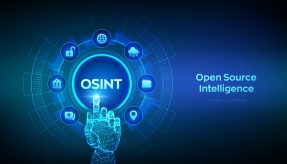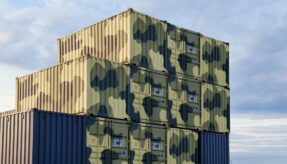
Writing for Defence Online, Vanessa Fernandes, Principal Consultant in Atkins, a member of the SNC-Lavalin Group, examines how data can enhance operational sustainability.

Vanessa Fernandes
Vast amounts of data are being exploited by organisations to improve decision making and deliver better products and services for customers. But so far, little emphasis has been placed on how this data could improve operational sustainability.
Increasingly, business leaders are being held to account to ensure they reduce their environmental footprint and deliver solutions that align with the United Nation’s 2030 Agenda for Sustainable Development and the UK Government’s Net Zero targets. The Defence sector is no exception. This requires sustainability to be included as a key outcome in data-enabled approaches, to improve operations sustainably and with potentially significant reputational gains.
Let’s start by defining sustainability.
“Sustainability is a measure of an organisation’s ability to thrive in the long term within the environment it operates, without jeopardising that environment. i.e. will the organisation still be operating 10, 50 or 100 years from now. When we say “environment” we are talking about not just the physical environment, climate change etc.; but also the economic, political, social, technological and legal environments.”- Paul Barreto, Head of Outcome Delivery, Dŵr Cymru Welsh Water
Drawing on this holistic view of sustainability requires an equally holistic view of digital transformation[1]; bringing people, process, organisation, technology and data perspectives together to make an impact. This digital transformation can be achieved by utilising the Defence sector’s most valuable asset – data – to build a sustainable business and operational model while delivering value for money to taxpayers. Drawing on cultural and technical lessons learnt from a broad range of sectors including transportation, infrastructure and energy, organisations can fast-track changes to meet sustainability goals by leveraging digital technologies such as digital twins[2] and advanced modelling[3] to manage operational performance and risk, and enhance asset longevity.
External factors like COVID-19 have certainly sped up the adoption of all things digital, resulting in changes to ways of working and a reprioritisation of what is classed as essential. This has often led to positive results for the sustainability agenda, like the impact of reduced travel and tourism on air and water quality, and the reduction in energy consumption while numerous industries were shut down.
So, how can organisations use their data to improve operational sustainability?
Key areas where maximum operational efficiency can be achieved are:
- Enterprise risk management: aligns strategy, risk and sustainability objectives ensuring risk powers organisational performance.
- Process optimisation: ensures that through automation and optimisation, processes are completed in minimum time and with maximum sustainability impact.
- Continuous improvement and customisation of services: analysis of service users information provides useful insight into usage and user expectations. These can further be fed into the sustainability approach leading to further improvements.
Despite the UN identifying 17 Sustainable Development Goals, some of these are hard to track, partly due to the lack of data available. Awareness of the whole life impact of operations is vital; the underlying data is key to identifying the areas where sustainability efforts need to be strengthened. Building this rich picture requires strong foundations, which can be achieved through robust data lifecycle management, development of organisation-wide sustainability metrics and active leadership support.
Risk management solutions can be powered by big data analytics, AI and machine learning. This can be achieved through predictive analytics tools finding patterns and building sustainability impacts in risk calculations. Thus, sustainability becomes embedded in organisational decision making.
Big data analytics are ideal for user sentiment analysis. They can provide organisations with valuable insights about the merits and demerits of their existing operations and methods of service delivery. This information allows organisations to make services seamless, user-friendly, and up to speed with the demands of existing and potential users. This is important, given a renewed focus from the public on sustainability and its far-reaching reputational impact.
Digital twins can help organisations build a realistic model of the physical world and visualise the impact of decisions made. While this is the most common application, it is not the only one. Digital twins can also be used as a predictive tool to model various outcomes and forecast outcomes. This allows organisations to map not only individual physical assets but also enterprise-wide processes and systems. In turn, organisations are then able to monitor and model the impact of sustainability metrics like carbon emissions, energy use and water consumption.
Real-time analytics applications can ensure all of this is done in minutes, if not seconds. Embedding these tools in risk management solutions will encourage compliance with regulatory requirements, enhancing overall operational efficiency in risk management. Process mining combines multiple data science techniques to extract insights from event logs created by any enterprise controlling system. It can help organisations with complex process maps improve their supply chains and track operations in real-time.
Deep learning tools can be highly impactful when developing sustainable practices in business process optimisation. AI can lead to the creation of high-quality automated solutions. Hence, this area of operational efficiency can be elevated with relatively low investment and to short timescales.
In summary, it is safe to conclude that all aspects of achieving operational efficiency and sustainability enhancement can be improved with the use of big data analytics, AI and machine learning. Consequently, their use would lead to holistic improvements at the organisational level, putting the sustainability agenda at the heart of operations, where it will make the greatest impact.
If you would like to join our community and read more articles like this then please click here







